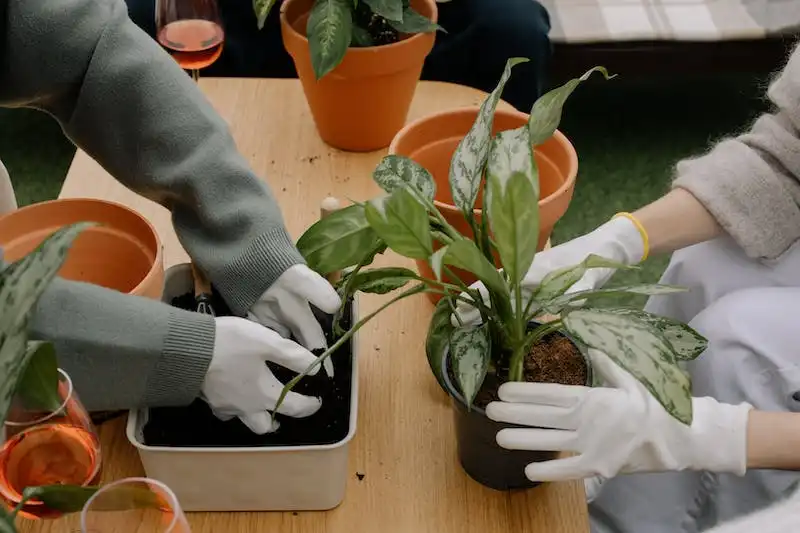Welcome to Molly’s Sustainable Farming Project, a local initiative focused on promoting sustainable agricultural practices. Our project is centered around the cultivation of a unique plant called the groundcherry, a member of the Solanaceae family. With its golden fruits and toothed leaves, this plant offers a deliciously tart and sweet flavor.
One of the main considerations when starting a sustainable farming project is selecting a suitable site for planting. Groundcherries thrive in sunny, open areas with sufficient heat and humidity. They can be grown either directly in the ground or in containers, and maintaining a consistent moisture level is crucial for their development.
Germination and transplant spacing are also important factors to consider. Groundcherries can be easily grown from seeds, and once the plants are ready to be transplanted, they should be spaced at least 2 feet apart to allow for optimal growth.
Another key aspect of sustainable farming is pest control. Groundcherries have relatively few issues with pests and diseases, making them a great choice for organic gardening. Selecting resistant varieties and providing appropriate care can greatly reduce the need for chemical interventions.
Harvesting groundcherries is simple and rewarding. The fruits are ready to be picked when they turn yellow and fall to the ground. They can be enjoyed fresh, added to various recipes, or dried for later use. The fruit’s unique flavor, often described as a mix between pineapple and gooseberry, can be a delightful addition to both sweet and savory dishes.
In addition to their culinary merits, groundcherries have become increasingly popular due to their sustainability. These plants are part of a regenerative agricultural system that aims to leave a positive impact on the environment. By growing groundcherries, we can reduce the need for water, fertilizer, and pest control products, making our farming practices more eco-friendly.
Join us on this sustainable farming journey and discover the wonders of groundcherries. Whether you are an experienced gardener or just starting out, we thank you for your effort in selecting this viable and delicious crop.
How to Grow and Care for Ground Cherries
Ground cherries, also known as Physalis, are small fruits that grow on low-lying bushes. They are easy to grow and care for, making them a popular choice for sustainable farming projects. Here are some steps to get started:
Planting
To grow ground cherries, start by selecting a sunny spot in your garden. These plants thrive in full sunlight, so choose a location that gets at least 6-8 hours of direct sunlight per day. The soil should be well-drained and fertile.
Transplant the seedlings outdoors after the risk of frost has passed. Space the plants about 2-3 feet apart to allow sufficient room for growth. You can also start the seeds indoors and transplant them once they have reached a height of about 2-3 inches.
Care
Ground cherries require regular watering, especially during dry spells. Water deeply, making sure that the moisture reaches the root zone. Be careful not to overwater, as excessive moisture can lead to root rot.
Fertilize the plants once or twice during the growing season, using a balanced fertilizer. Follow the instructions on the label for the correct dosage and frequency. This will help promote healthy growth and fruit production.
Pest and Disease Control
Ground cherries can attract common garden pests, such as whiteflies and beetles. To prevent infestations, inspect your plants regularly and remove any pests you encounter. You can also try using organic insecticides or attract beneficial insects, like ladybugs, to control the population.
If your ground cherries are affected by diseases, such as fungal infections or bacterial wilt, immediately remove and destroy the affected plants to prevent the spread to others. Maintain proper spacing between plants to allow for air circulation, which will help reduce humidity and minimize the risk of disease.
Harvesting and Storage
Ground cherries are ready to harvest when the fruits have fully ripened and drop to the ground. Gently pick them up and remove the papery husk to reveal the sweet and tart fruit inside. You can also harvest them when the husks have turned brown and dry, but the fruit is still firm and aromatic.
Store ground cherries in a cool and dry place, or in the refrigerator, to prolong their shelf life. They can be eaten fresh, used in various recipes, or preserved by making jams, jellies, or pies. Ground cherries are a versatile fruit with a unique flavor that is reminiscent of pineapple or Chinese lanterns.
Thank you for reading our guide on how to grow and care for ground cherries. We hope you enjoy this delicious and sustainable addition to your garden!
How to Plant Ground Cherries
If you’re looking to add a unique and delicious fruit to your sustainable farming project, ground cherries are a great choice. These small, lantern-shaped fruits, also known as “mollys,” are easy to grow and have a delightful sweet-tart flavor. Here’s how to get started with planting your own ground cherries:
1. Selecting the Ideal Spot: Choose a sunny location on your farm or garden that gets at least 6-8 hours of full sun each day. Ground cherries thrive in warm temperatures, so planting them in a south-facing spot is ideal.
2. Preparing the Soil: Ground cherries prefer slightly acidic soil with a pH level between 5.5-7.5. Test the soil’s pH level and adjust it accordingly by adding organic matter or using pH-balancing amendments. Ensure the soil is well-drained and rich in nutrients, as ground cherries have similar requirements to tomatoes and peppers.
3. Starting Seeds: Start ground cherry seeds indoors about 6-8 weeks before the last frost date in your area. Plant the seeds in pots filled with a high-quality seed starting mix. Keep the soil moist and maintain a temperature between 70-75°F (21-24°C) to promote germination. Once the seedlings have developed their second set of leaves, transplant them to larger containers.
4. Planting in the Ground: Once the soil has warmed up and there is no risk of frost, you can move your ground cherry seedlings outdoors. Space them about 2-3 feet apart to allow for proper growth and airflow. You can also provide support such as stakes or cages as they grow taller.
5. Watering and Fertilizing: Keep the soil consistently moist, but not waterlogged. Ground cherries have shallow roots, so regular watering is necessary, especially during dry periods. Fertilize the plants with a balanced organic fertilizer every 3-4 weeks throughout the growing season to support their nutrient needs.
6. Pollination and Isolation: Ground cherries are self-fertile, but cross-pollination can occur if there are other related plants nearby. To maintain the purity of your ground cherry plants, consider isolating them by at least 30 feet from other nightshade family plants such as tomatoes and peppers.
7. Care and Maintenance: Ground cherries are relatively low-maintenance but may require some pruning to maintain airflow and prevent disease. Remove any dead or damaged foliage, and trim back any excessive growth that blocks sunlight from reaching the lower parts of the plant.
8. Harvesting: Ground cherries are ready for harvest when the fruits fall from the plant or when they turn a golden yellow color. Gently twist or cut the fruits from the plant stem to avoid damaging them. The fruits will continue to ripen for a few days after harvesting, so you can enjoy them at different stages of sweetness.
9. Enjoying Ground Cherries: Ground cherries are delicious eaten fresh, preserved, or used in various recipes. They make a great addition to fruit salads, pies, jams, and salsas. Their unique flavor and versatility make them a popular choice among sustainable farmers and gardeners.
Now that you know how to plant and care for ground cherries, you can start adding these delightful fruits to your sustainable farming project. Enjoy the rich flavor and beautiful lantern-shaped fruits that ground cherries provide!
When to Plant
When deciding when to plant your crops for the New Entry Sustainable Farming Project, there are several factors to consider. These include the recommended planting dates for different populations, as well as specific considerations for each type of seed.
For open-pollination crops, such as solanaceae family plants like tomatoes and peppers, it is most common to start seeds indoors about six to eight weeks before the last frost date in your area. This allows them to grow into viable seedlings before transplanting them into the ground. These seedlings should be planted about two feet apart to allow for adequate root development.
For crops like jalapeño peppers, tomatillos, and groundcherries, it is recommended to start seeds indoors about eight to ten weeks before the last frost date. This allows for a longer growing season to ensure the fruits have enough time to ripen.
Chinese cabbage, on the other hand, can be directly sown into the ground as soon as the soil can be worked in the late spring. The seeds should be planted about half an inch deep and six inches apart to allow for proper growth and development.
When planting, it is important to choose a site that gets full sun and has well-drained soil. If your soil is heavy clay, adding organic matter such as compost can help improve drainage. Additionally, it is important to avoid planting crops from the same family in the same location year after year, as this can lead to increased pest and disease issues.
Once your crops have been planted, it is important to provide them with proper care. This includes regular watering, fertilizing as needed, and ensuring they have adequate light. Weeding and cleaning around the plants is also important to reduce competition for nutrients and prevent pest issues.
As your crops begin to grow, selecting and saving seeds from your most successful plants can help to develop varieties that are well-suited to your specific farm and growing conditions. Harvesting fruits when they are ripe and removing any pests or diseased fruits as soon as you notice them can help to maintain healthy plants and prevent further issues.
When harvesting, it is important to handle the fruits with care to avoid bruising or damage. Properly storing the harvested crops, such as peppers, tomatoes, and groundcherries, in a cool and dry place can help to prolong their shelf life.
Overall, understanding when and how to plant your crops is essential for a successful sustainable farming project. By following these recommended guidelines and gathering additional information specific to each crop, you can ensure a bountiful harvest and contribute to a more sustainable food system.




